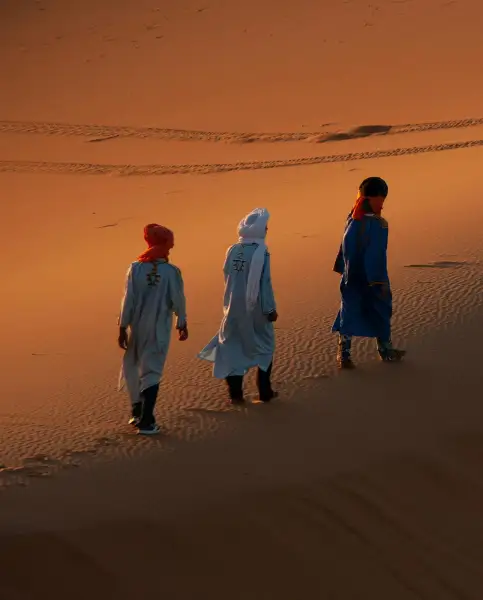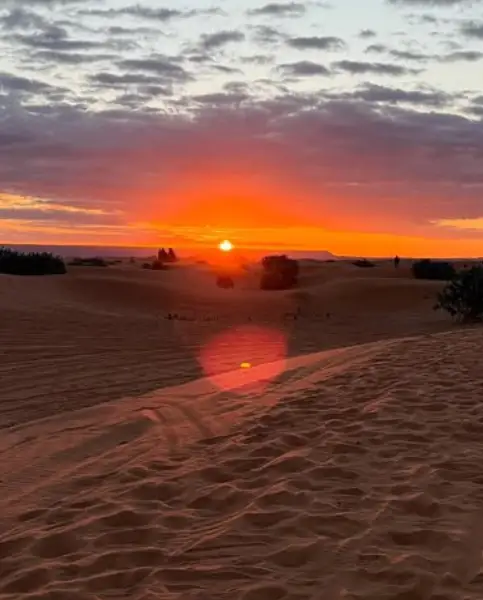


In the region of Drâa – Tafilalet, 560 km east of Marrakech, near the Algerian border, until recently, the village of Merzouga was known for the impressive sand dunes of Erg Chebbi which are the highest in Morocco (160 meters), for its rocky mountains, and especially for its beneficial natural therapies known by various names including sand bath, sandtherapy, or arena therapy practiced against pathologies related to osteoarthritis, rheumatism, lumbago and other dermatological diseases (skin). Over the years, it has become clear that Merzouga was one of the main Moroccan gateways to adventure in the Great Sahara; and in 2002, the construction of a tarmac road was completed which allowed a greater flow of tourists in love with adventure and change of scenery in an environment as captivating as mysterious which is the desert.
This influx of visitors has led to the creation of substantial accommodation structures in Merzouga, and in the immediate vicinity, accompanying them with various trek, mechanical sports, cultural, health and well-being activities – and even excursions to oases, historical sites and cities such as the city of Rissani, cradle of the Alaouite dynasty. So Merzouga has been transformed into more than just a tourist stopover.
However, whatever the length of the stay, Merzouga welcomes all its visitors, and, as an open door to the great adventure, offers them a foretaste of its grandiose spaces bathed in serenity, its bright lights, its colours with such particular tones, its green oases, its vast undulating dunes, the hospitality and the age-old culture of the nomads of Tafilalet, the experience of traditional dinners under the stars near a fire, music and songs that seem to arise from ancient ages, and peaceful nights under a sky illuminated by thousands of stars. Moments and images that will never leave you again.











Etymology: Origin of name unknown. According to one source, it could come from the Arabic “merzuk” which means wealthy, lucky.
The true history of Merzouga begins with the installation of French troops from 1916 after their victory at Tafilalet, and thus control the region of Tafilalet, especially the city of Rissani, cradle of the Alaouite dynasty (Moulay Ali Cherif). In the vicinity, Rissani was an important centre of trans-Saharan trade, the caravans traded gold, salt, ivory, slaves. Later, the region’s goat leather was traded, followed by minerals and fossils. In recent decades, the main economic activity in Merzouga has focused on tourism.
